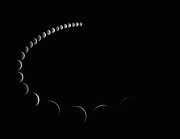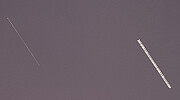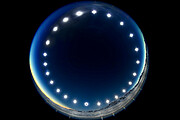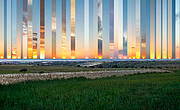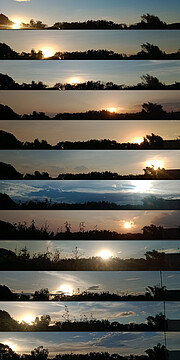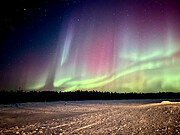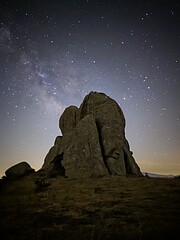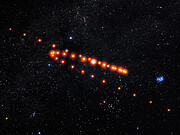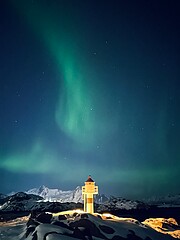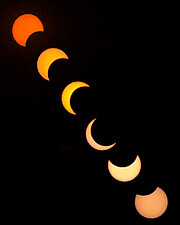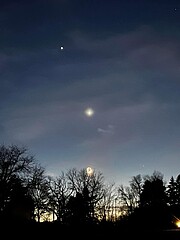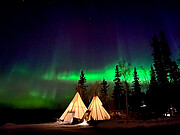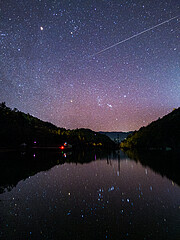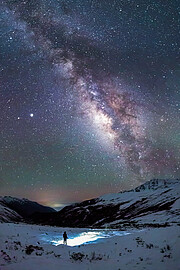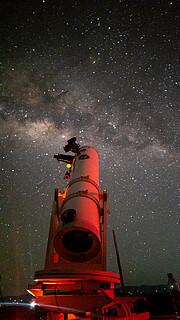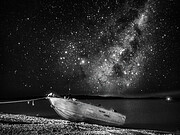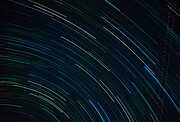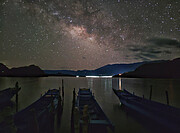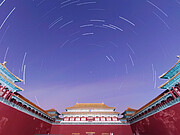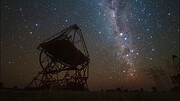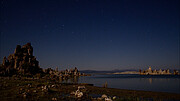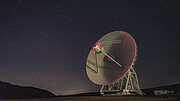- News
- Science
- Scientific Bodies
- Divisions
- Commissions
- Commission A1 Structure
- Commission A2 Structure
- Commission A3 Structure
- Commission A4 Structure
- Commission B1 Structure
- Commission B2 Structure
- Commission B3 Structure
- Commission B4 Structure
- Commission B5 Structure
- Commission B6 Structure
- Commission B7 Structure
- Commission C1 Structure
- Commission C2 Structure
- Commission C3 Structure
- Commission C4 Structure
- Commission D1 Structure
- Commission E1 Structure
- Commission E2 Structure
- Commission E3 Structure
- Commission E4 Structure
- Commission F1 Structure
- Commission F2 Structure
- Commission F3 Structure
- Commission F4 Structure
- Commission G1 Structure
- Commission G2 Structure
- Commission G3 Structure
- Commission G4 Structure
- Commission G5 Structure
- Commission H1 Structure
- Commission H2 Structure
- Commission H3 Structure
- Commission H4 Structure
- Commission J1 Structure
- Commission J2 Structure
- Commission J3 Structure
- Commission X1 Structure
- Commission X2 Structure
- Past Commission Organising Committees
- Working Groups
- Centres
- Scientific Meetings
- Rules & Guidelines
- General Assemblies
- Meeting Proposals
- Future IAU Meetings
- General Assemblies
- EC Meetings
- Officers' Meetings
- Regional Meetings
- Symposia
- Focus Meetings
- Institutional Meetings
- IAU Offices Meetings
- IAU-Sponsored Meetings
- Letters of Intent submitted for 2024
- Letters of Intent submitted for 2023
- Letters of Intent submitted for 2022
- Letters of Intent submitted for 2021
- Letters of Intent submitted for 2020
- Past IAU Meetings
- Templates
- Other Meetings
- Grants & Prizes
- Scientific Bodies
- Publications
- IAU Publications
- IAU Strategic Plan
- Symposia
- WGSBN Bulletins
- Regional Meetings
- Information Bulletins/Catalyst
- E-Newsletters
- Focus Meetings
- Transactions A
- Transactions B
- Related Publications
- GA Newspapers
- CAPjournal
- IAU Books
- Brochures
- IAU Offices
- WG Reports
- Commission Reports
- Division Reports
- Past IAU Publications
- Rules, Guidelines and Instructions for Proceedings
- Publishers
- IAU Publications
- Administration
- About the IAU
- Statutes & Rules
- IAU Policies
- IAU Executive Bodies
- IAU Secretariat
- Resolutions
- Members Administration
- Administrative Dates & Deadlines
- International Organisations Relations
- Donate to the IAU
- Training in Astronomy
- Astronomy for Education
- Astronomy for Development
- Astronomy for the Public
- Office for Astronomy Outreach
- FAQ
- Themes
- Satellite Constellations
- Astronomy in Everyday Life
- How to Report a Discovery
- Careers in Astronomy
- Defining our Place in the Cosmos
- The Constellations
- Light Pollution
- Measuring the Universe
- Near Earth Objects
- How to Participate in Astronomy Research
- Naming of Astronomical Objects
- Naming of Exoplanets
- Buying Star Names
- Naming Stars
- Pluto and the Solar System
- IAU Member Statistics
- Our Moon: the Moon
- Meteors & Meteorites: The IAU Definitions of Meteor Terms
- UNESCO-IAU Portal to the Heritage of Astronomy
- Social Media
- Past Events
- Call for Online Resources
- Astronomy@Home Awards
- Contact
ann23043 — Announcement

18 December 2023
Astronomical Images as a Gateway to Science
— Winners of the Third IAU OAE Astrophotography Contest Announced
The images of the sky captured by enthusiastic stargazers can leave one in awe, but they can also be important teaching tools, especially when they are open to all. For its third astrophotography contest, the IAU Office of Astronomy for Education’s (OAE) sought out images of the motions of the heavens: from the Sun’s path from across the sky through the year, to the movement of the stars in the night sky and the changing phases of Venus; as well as images taken with a smartphone. Each image breathtaking, each demonstrating an important concept. Modern imaging technology, from the simple smartphone to more sophisticated telescopes help to bring out great educational potential in these beautiful celestial images. Their power is even greater if the teachers and students realise that they were obtained, patiently and skillfully, using equipment that is commonly available.
From the phases of Venus to the path of the Sun over the course of a year, the IAU OAE third astrophotography contest has showcased a wide variety of awe-inspiring astronomical phenomena. After receiving nearly 430 remarkable entries from 40 different countries and territories worldwide, a panel of international astrophotographers and astronomy educators has now selected the winners, among which are many images taken with ordinary smartphones.
Astronomy is often considered a ‘gateway to science’ and beautiful celestial images are a valuable educational tool. When shared as open resources, they can have a lasting impact on teachers and learners globally. The OAE, building on the success of its previous contests, continues to expand its collection of high-quality educational resources, all of which are available under free licences, while recognising the dedication of those who contribute to it.
This year’s contest welcomed astrophotography enthusiasts at all skill levels. Participants submitted captivating images in various categories, including phases of Venus, day arcs of the Sun and solargraphs, sunrise and sunset locations throughout the year, and images captured exclusively with smartphones and mobile devices. Time-lapse videos highlighting the rotation of the Big Dipper or the Southern Cross were also invited.
After receiving nearly 430 remarkable entries from 40 different countries and territories worldwide, a panel of international astrophotographers and astronomy educators has now selected the winners. The entries were judged not only on their aesthetic and technical merits, but also on their educational value in the context of primary- and secondary-school teaching. The winners of this year’s contest will receive well-deserved cash prizes. In the category of still images with smartphones, six winners have been awarded €100 each. In each of the other categories, three winners have been awarded €750, €500, and €250 for first, second, and third place, respectively. Additional images and videos have been recognised with honourable mentions.
“Astrophotography is an extraordinary educational tool as it enriches learning with a visually engaging experience,” says Marcella Giulia Pace, one of the winners. “Through stunning images that capture the slow flow of time in space, students gain a unique visual perspective on the Universe's complexity and beauty. This dynamic and experiential approach not only makes the subject more accessible but also sparks scientific curiosity, providing educators with an effective tool to inspire a passion for cosmic studies. This method transcends mere visual revelation, opening minds, broadening horizons, and igniting interest in the vast, mysterious Universe.”
All winning entries will be featured prominently in the OAE’s collection of astronomy education resources and the IAU Image Archive. They will be accessible under a Creative Commons Attribution (CC BY) 4.0 International License, while ensuring that the talented photographers retain copyright to their images.
The OAE is again partnering with the OAE Center Italy as a co-sponsor of the contest. Livia Giacomini, panel member and editor-in-chief of the OAE’s astroEDU platform, says: “I was really impressed to see how many different topics can be explained with a simple image, going from very distant astrophysical objects to explanations of everyday phenomena that take place on Earth, the planet we are just starting to protect. I was aware that a picture says more than a thousand words, but with this contest it is also very clear that a picture can also teach more than a thousand words.”
This year the OAE is also delighted to collaborate with its sister office, the IAU Office for Astronomy Outreach (OAO), another co-sponsor. As part of the OAO’s mission of “astronomy for everyone”, it will host an e-exhibit and gala to honour the winners and entrants who receive honourable mentions in the smartphone astrophotography category. The date of this event will be announced soon.
Kelly Blumenthal, OAO Director, says: “Astrophotography is often seen as only available to those with significant resources and experience. In May 2023 we held a series of workshops on smartphone astrophotography, demonstrating that anyone can be an astrophotographer. We are proud to co-sponsor this contest and are excited to see the creative ways these images are used in astronomy education and outreach.”
The IAU congratulates all the talented participants in and winners of the third OAE Astrophotography Contest, whose contributions to astronomy education will inspire and educate generations to come.
The winning entries in each category are:
Still images of phases of Venus:
- First place: Phases of Venus, by Stephane Gonzales, France
- Second place: A Matter of Perspective, by Christofer Baez, Dominican Republic
Honourable mentions:
Still images of day arcs of the Sun and Solargraphs:
- First place: The Eclipse Clock/Eclipse on a Polar Day, by Stephanie Ye Ziyi, China
- Second place: The Path of the Sun, by Frank Niessen, Germany
- Third place: Equatorial Sunrise Eclipse, by Fabrizio Melandri, Italy
Honourable mentions:
Still images of sunrise and sunset location over the year:
- First place: When the Sun Bounces, by Milos Obert, Slovakia
- Second place: Occasive Amplitude, by Marcella Giulia Pace, Italy
- Third place: Where the Sun sets every month, by John Paul Pile, the Philippines
Still images taken exclusively with smartphones/mobile devices:
- Northern Lights Color, by Jason Johnson, USA
- Star Trail in the Southern Hemisphere with Bortle 4 scale light pollution, by Slamat Riyadi, Indonesia
- The Milky Way in the Smart World, by Biagio Meli, Italy
- Milky Way Over Quiver Tree, by Jianfeng Dai, China
- Retrograde Motion of Mars, by Rob Kerby Guevarra, the Philippines
- Fire of the Sky, by Stephanie Ye Ziyi, China
Honourable mentions:
- Smartphone Partial Eclipse Combined, by Douglas Duncan, USA
- Full Flower Moon 2023, by Joslynn Appel, USA
- Jupiter, Venus, Moon Conjunction, by Joslynn Appel, USA
- Northern Lights — Teepees, by Oanh Vuong, USA
- The Geminid Fireball, by Jianfeng Dai, China
- Milky Way Stargazer, by Jianfeng Dai, China
- Learning Nights, by Juan Pablo Botero Londoño, Colombia
- Milky Way over H.E.S.S Observatory, by Jianfeng Dai, China
- Sailing the Celestial Seas, by Lucy Yunxi Hu, China
- 24 Hours of Rainbows, by Fabrizio Guasconi, Italy
- Star Trails, by Govind Gunjar, India
- Starry Popocatépetl, by David Olivos Sánchez, Mexico
- Our Sky, by Ema Radulović, Serbia
- Lugu Lake Without Clouds, by Liu Yang, China
- Star Trails of the Forbidden City, by Stephanie Ye Ziyi, China
Time-lapse videos of the rotation of the Big Dipper or Southern Cross:
- First place: Southern Sky over La Silla, by José Rodrigues, Portugal
- Second place: The Rotating Planet, by Jianfeng Dai, China
- Third place: The Big Dipper in the Polar Night, by Stephanie Ye Ziyi, China
Honourable mentions:
- Beautiful Night in the Atacama Desert, by Uwe Reichert, Germany
- Big Dipper Over the Mono Lake, by Fabrizio Melandri, Italy
- Big Dipper and Comet Neowise C/2020 F3, by Giorgia Hofer, Italy
- The Big Dipper With the Sardinia Radio Telescope, by Antonio Finazzi, Italy
More information
The IAU is the international astronomical organisation that brings together more than 12 000 active professional astronomers from more than 100 countries worldwide. Its mission is to promote and safeguard astronomy in all its aspects, including research, communication, education and development, through international cooperation. The IAU also serves as the internationally recognised authority for assigning designations to celestial bodies and the surface features on them. Founded in 1919, the IAU is the world's largest professional body for astronomers.
The IAU Office of Astronomy for Education is hosted at Haus der Astronomie (HdA), managed by the Max Planck Institute for Astronomy. The OAE’s mission is to support and coordinate astronomy education by astronomy researchers and educators, aimed at primary or secondary schools worldwide. HdA’s hosting the OAE was made possible through the support of the German foundations Klaus Tschira Stiftung and Carl-Zeiss-Stiftung.
The OAE is supported by a growing network of OAE Centers and OAE Nodes, collaborating to lead global projects developed within the network. The OAE Centers and Nodes are: the OAE Center China–Nanjing, hosted by the Beijing Planetarium (BJP); the OAE Center Cyprus, hosted by Cyprus Space Exploration Organization (CSEO); the OAE Center Egypt, hosted by the National Research Institute of Astronomy and Geophysics (NRIAG); the OAE Center India, hosted by the Inter-University Centre for Astronomy and Astrophysics (IUCAA); the OAE Center Italy, hosted by the National Institute for Astrophysics (INAF); the OAE Node Republic of Korea, hosted by the Korean Astronomical Society (KAS); OAE Node France at CY Cergy Paris University hosted by CY Cergy Paris University; and the OAE Node Nepal, hosted by the Nepal Astronomical Society (NASO).
Links
Contacts
Eduardo Penteado
Coordinator, IAU OAE
Email: penteado@astro4edu.org
Lars Lindberg Christensen
IAU Director of Communications
Cell: +1 520 461 0433/+49 173 38 72 621
Email: lars.christensen@noirlab.edu
About the Announcement
Id:
ann23043
ann23043
